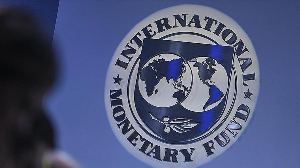Food, according to the Encyclopaedia Britannica, is any substance consumed to provide nutritional support for an organism. It is usually of plant or animal origin and contains essential nutrients such as carbohydrates, fats, proteins, vitamins or minerals. Every man needs food for survival and so, any action that limits food production and its access is seen as inimical to human development.
For this, the Food and Agricultural Organisation (FAO) of the United Nations Organisation (UNO) was formed in 1945 to ensure global food security. The organisation instituted World Food Day which is celebrated annually on 26th October to promote world food security. Unfortunately, a large section of the world’s population continues to suffer hunger despite the increased production of food due to improvement in agriculture. Produced but uneaten food occupies almost 1.4 billion hectares of land, representing nearly 30 per cent of the world’s agricultural land area. According to the Natural Resources Defence Council as cited by Gunders and Dana (2012), Americans throw away up to 40 per cent of food that is safe to eat. The FAO has not been successful in achieving its aim largely due to the high rate of global food wastage.
The FAO Report (2013) defines food waste as the decrease of food in subsequent stages of the food supply chain intended for human consumption. Food is wasted throughout the supply chain, from the initial production down to final consumption. The wastage may be accidental or intentional, but ultimately leads to less food available for all. The FAO believes that food waste may be due to several factors, including problems in harvesting, storage, packaging, transport, market or price mechanism, as well as institutional and legal frameworks. The Report further indicates that the food wasted globally sums up to one-third of the total food produced for human consumption. That is, about 1.6 billion tons a year. This scary statistics may be attributed to the reasons explained below.
First is the inappropriate planning by consumers. Sometimes, people buy lots of food without critically considering when and how the food will be prepared for consumption. These foods may be kept unduly for too long and finally expire. In some instances, food that does not taste good because it was badly prepared finds its way into the dustbin and ends up as a waste.
In addition, there are sometimes errors in industrial processing and keeping up with food safety policies. The food safety protocols give no room for error in industrial processing or any other compromise that diminish the quality of the final food products. As such, the errors during industrial processing of food mean that all food items that do not meet the set standards are wasted.
Lack of proper storage facilities in most parts of the world, particularly in Africa and Asia, leads to a massive waste of farm produce during periods of bumper harvest. During harvest seasons, farmers are forced to sell out all their farm products at cheaper prices because they have no means for storing and preserving their products for a longer period. Some farmers do not see the need to transport these products to the market due to extremely low prices. They, therefore, leave the items to rot in the farms. In effect, just a fraction of what is produced reaches consumers and hunger strikes again during the off-season.
The over-preparation of food in restaurants, hotels and food service industry also contributes immensely to food waste. During festive seasons such as Christmas, the demand for food increases. Therefore hotels, restaurants and food service industry over-prepare food in anticipation of high consumer volume and the ability of not running out of menu. This leads to wastage if all food is not sold.
Again, many people have not developed the culture of giving alms to the less privileged in society. Sometimes, people buy food items which they later realise that they do not really need them. Instead of giving them to neighbours and friends, they keep them till the items expire.
In his article “Food Waste Has a Big Impact on Climate, Water, Land and Biodiversity”, Bill DiBenedetto highlights the key findings of the FAO’s Food Wastage Footprint: Impacts on Natural Resources as follows:
In addition to causing needless hunger, the carbon footprint of food produced and not eaten is estimated at 3.3 billion tons of greenhouse gases: making food waste the third top greenhouse gas emitter after USA and China.
Globally, the blue water footprint (i.e. the consumption of surface and groundwater resources) of food waste is about 250 cubic kilometres, which is equivalent to the annual water discharge of the Volga River, or three times the volume of Lake Geneva.
Fifty-four per cent of the world’s food wastage occurs upstream during production, post-harvest handling and storage, according to FAO’s study. About 46 per cent of it happens during downstream, at processing, distribution and consumption stages.
The statistics on global food waste (one-third of total food produced for human consumption goes waste) is something that continues to affect world food security and the trend is likely to extend for a considerable period if nothing is done about it. In the words of FAO’s Director-General, Jose Graziano da Silva, “We simply cannot allow one-third of all the food we produce to go waste or lost because of inappropriate practices when 870 million people go hungry every day.”
To mitigate the problem of food waste, there is the need to balance food production with demand. That is, in hotels, restaurants and foodservice industry, managers and chefs must ensure that they produce and cook food in accordance with demand or the orders made. The second strategy should be the development of efficient technologies and production systems that better storage, harvesting, processing and the distribution processes. Also, consumers must buy and prepare food with plan.
Consumers should only buy food according to their plans or in small batches to reduce waste. Last but not least, campaigns for reducing food footprint can help fishers, farmers, supermarkets, food processors, individual consumers and governments to work on strategies for preventing food wastage. The UN and FAO have already launched such a campaign dubbed, “Think. Eat. Save- Reduce Your Foodprint.”
Opinions of Monday, 2 July 2018
Columnist: Anthony Nsiah Kwame



















